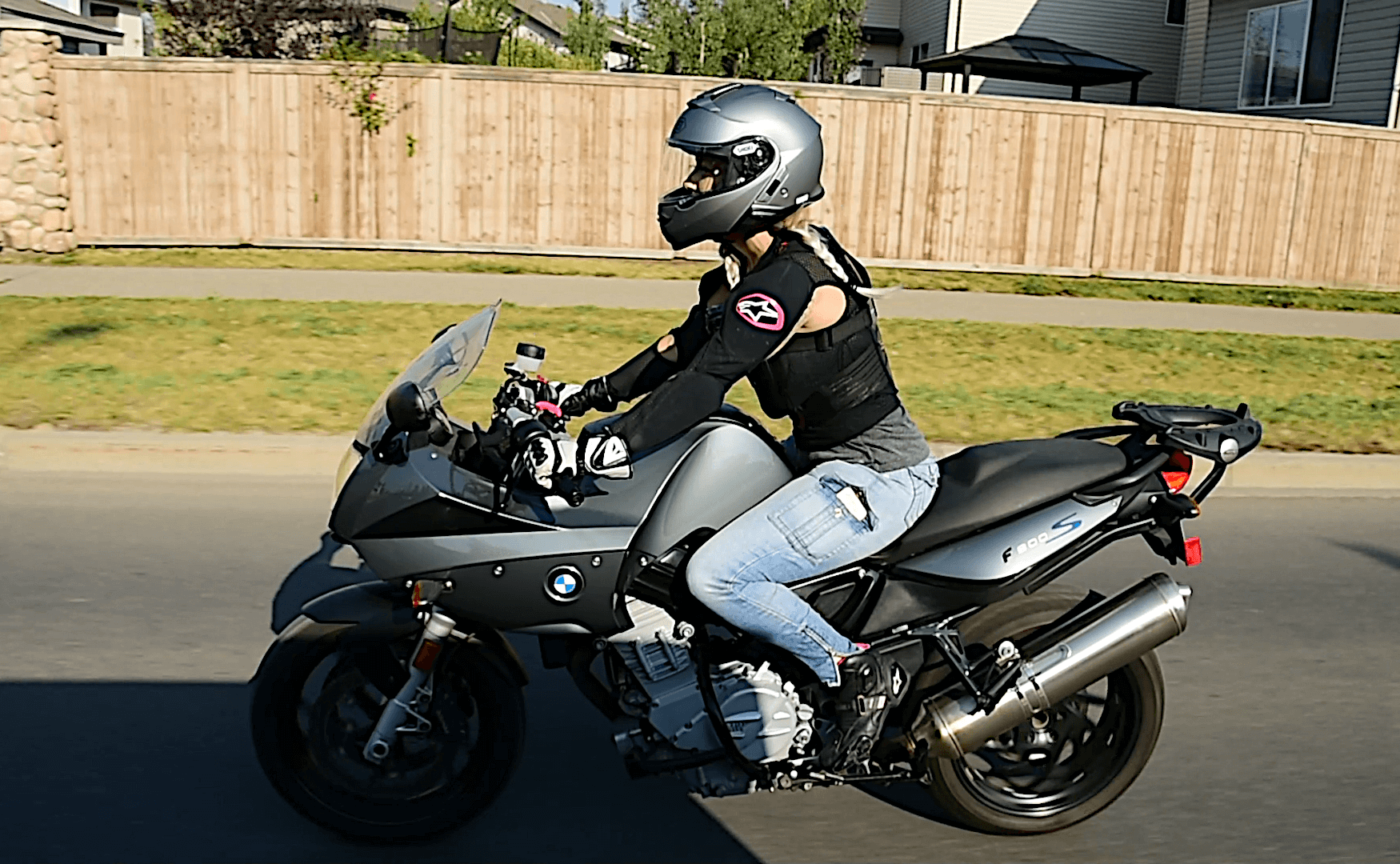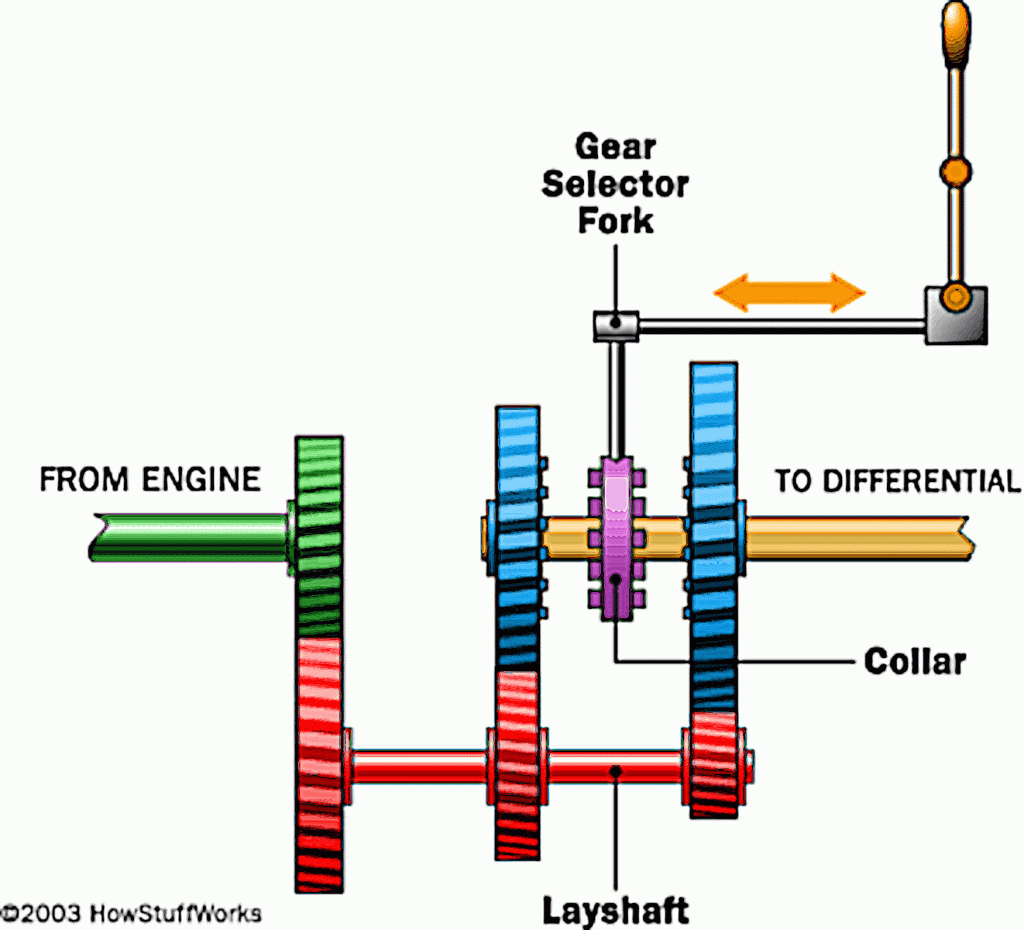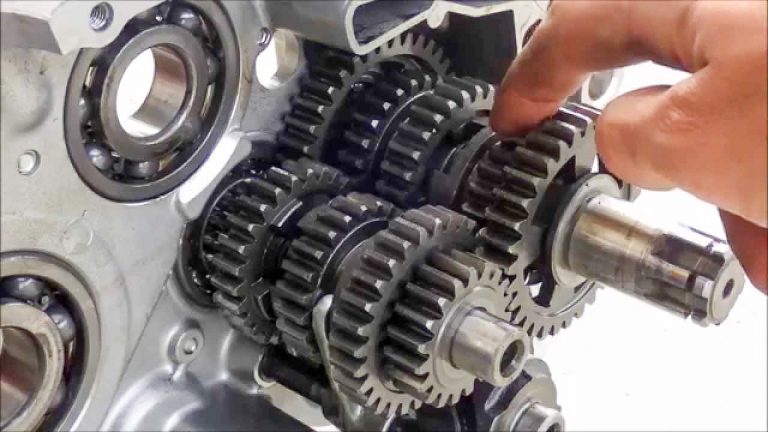When it comes to riding smoothly on a motorcycle, Mr.Chow from the Hangover would probably ask – “But, did you shift?”
The majority of motorcycles on the market are a manual shift, meaning you change gears yourself instead of relying on the vehicle’s mechanics to do it for you and they involve a lever called a clutch lever. To keep it simple, I’ll focus on shifting with a clutch on a 6-speed motorcycle (some have 4 or 5 gears – pretty much the same shift pattern minus one gear).
Basically, your bike will tell you it needs to shift by how the engine sounds and how it responds – this is how I like to teach my students, as relying on a tachometer (which shows the engine RPM or Revolutions Per Minute) is one more thing that takes your eyes off the road.
Keeping your eyes on the road is extremely important – especially when just learning – and just as important years down the road as that could be the difference in arriving home or arriving 6 feet under on a gurney.
Plus learning how to read, listen to and feel the motorcycle can also tell you when something is off and doesn’t sound like it usually does or should, or something isn’t working quite right (which means you may want to get it checked by someone – preferably someone who is a licensed motorcycle mechanic).
Shifting on motorcycles is sequential. This means the lowest gear is 1st, then neutral is a half click up between 1st and 2nd (basically up or down, N or neutral is always between 1st and second gear with one exception which I’ll touch on at the end of this article.
So a 6-speed bike pattern should look like this: 1, N, 2, 3, 4, 5, 6. If you’re in MotoGP style shifting, that pattern is now opposite where you shift one up to get into first, and down to reach 2-6 (again all in sequential order just opposite of the regular shift style). Please see my previous guide for more details on the shift types.
Matching by Sound and Feel
Basic Rule of Sound
I have a simple saying: if the engine sounds high, shift higher (shift up in gears) and if the engine sounds slow and lower (low pitch), shift lower. That’s a really easy way to remember on when to shift and that’s my basic rule of sound.
High sound = shift high, low sound = shift low.
Now to do this properly, there’s a number of different methods people teach, but for beginners, I like to stick with the simplest way and once you know more mechanically about your bike, with muscle memory and riding time, experimentation with what you’ve learned won’t hurt.
When riding in first gear for example and shifting up to second, you need to give the bike a reason to shift. Optimally you will have a good throttle response while the clutch is disengaged, but the engine is not screaming at you at what they call red-line. It’s where you’ve hit the engine limit of rotation speed and it bounces off something called a limiter so your engine doesn’t exceed its capabilities and drastically reduce its lifespan.
If you gear up too soon, and stall the bike, meaning the engine wasn’t given enough power for what you were telling it to do, just grab the clutch lever to the handlebar and shift down 7, 8 about 1000000 times (as long as it’s more than the number of gears, then you know you’re in first), press the start button, clutch in and get going again. You can start off in higher gears, but you need substantially that much more throttle to encourage some form of acceleration.
What Gear Am I In?
I always ask my students, how do you know what gear you’re in? It’s a trick question – you usually don’t. You know you start in first, and you can only change one gear at a time. So it’s back to my basic rule of sound and shifting down more times than the number of gears in order to know you’re back in first gear.
I was told, “but hey Jenn – this bike shows on the controls which gear I’m in”, to which I usually reply, “don’t trust electronics – as eventually, they fail” and tape it off from being seen until we’re out on the road – much to their dismay.
The feel part comes in with your clutch lever and how the bike power changes, and also with your foot on the shift lever. You should have shoes that are proper motorcycle shoes both for safety (I’m a huge believer in ATGATT or All The Gear All The Time), and they are designed so that you should be able to feel the shift lever.
Foot Positioning
I’ve had students who’ve worn steel-toed boots or thick heels with an edge on them – and they always seem to end up with the problem of not completing the shift and slipping into neutral because maybe they’re using the edge of the shoe instead of getting their foot right under the lever. About 90% of the time from observing, that ends up being the problem if they are having any at all with shifting.
What Happens When You Shift Gears?
Diagram based off of the original from VF750FD
Shifting Sequence
So to get into the mechanics, first I’ll explain the sequence of shifting. Simply put, when you are ready to change gears, you pull in the shift lever – disengaging the engine from the rear wheel (simple terms), place your foot on top or underneath the lever (depending on the style of shifter and if you’re going up or down in the gear sequence) and either press down or pull up on that lever with your left foot.
Then at the same time, you’ll apply the throttle and release the clutch lever slowly. I emphasize slowly because of the tendency of newer riders to just let the lever go suddenly (most of the time from the fatigue of muscles that haven’t been used in a while or never) instead of easing into the change.
It is important to either have a little throttle on or “blip” the throttle as an alternative (basically raising the RPM by a little bit by quickly opening and closing the throttle and letting the RPMs drop to mesh with the gear change). This is why you sometimes hear motorcyclists rev their engines when changing gears – and no, it’s not just to show off. That’s the sequence of movements to complete your shift.
This is in addition to looking where you are going, holding the tank with your knees and everything else that is currently going on while riding. Now, can you see why I say looking at the gauge cluster is irrelevant at first?
Diagram by Auto – How Stuff Works
Movement Mechanics
Back to the mechanics of the bike. What is happening while you are doing all these movements? First I’ll start with the clutch since that is the first thing you will touch when going to shift in the majority of cases unless it’s automatic or has a quick shift – we will get into that at a later article.
When the clutch is engaged – lever is out and power goes to the rear wheel – there are little springs pressing on the clutch plate that connects the primary drive to the input shaft. In other words, the part the rotates from the pistons going up and down that connects to different gears to translate that rotation power to the rear wheel.
When you pull that lever in, that plate separates, releasing the connection to the engine. This allows you to change the gears (which is near impossible without the clutch unless it’s perfectly timed – and that is something that is more advanced training).
The shift lever that your foot presses on is connected to something called a gear selector fork. This moves around a part that attaches the gears in the engine to the differential, such as parts that contain the chain, belts or drive shaft that transfers power to the rear wheel.
The gear selector fork has something called a collar with “dogs” that mesh together when the fork moves from one gear to the next. “Dogs” are the little bits that interlock the gears together to the drive shaft from the engine. It’s like if you were to put your hands together and interlace your fingers, your fingers would act like the “dogs”.
The Dreaded False Neutral
Courtesy of Bikes Republic
Going a step further with shifting, it is possible for your bike to slip into something called False Neutral or between gears that are not supposed to have neutral such as 3rd to 2nd, 4th gear to 5th and so on.
What that means is that when you moved the shift lever to change the gear, it might not have been enough of a movement and the dogs disconnected from the one gear, but didn’t quite connect with the next one and so the connection hasn’t completed and there is no power to the rear wheel. Basically, the gears are moving but there’s nothing to connect them.
If that ever happens, pull the clutch in, put your foot underneath (or on top in the case of MotoGP style shifting), and hold your foot thereafter pulling up (or pushing down for MotoGP style) – basically going briefly into a higher gear. This will lessen the chance of gear damage as they’re synching into a slower rotation.
I won’t say you won’t have damage, because that’s not necessarily true and maybe signs of wear in your gearbox – but just a quick what to do and correct the gear once you’re out of false neutral. A good way to avoid this from happening all together is simply to make sure that you are fully compressing/pulling the shift lever on your foot and maybe leave it there until you’re fully released the clutch.
There may be situations where having your foot below the shifter is not a good idea – please use common sense as if there’s something that will catch your foot such as the ground, it’d probably be safer for your feet to be above/on the pegs/boards.
Upshift vs. Downshift
Upshifting
Upshifting will always be easier than downshift as the gears are moving into a higher level and you are intending on going faster. So if you accidentally release the clutch too fast, it’s more forgiving although keep in mind that can also mean a lot of sudden power to the rear and a whole lot of change in dynamics (such as a wheelie or where your front tire comes off the ground).
Disclosure, I strongly do not suggest attempting wheelies or stunting of any sort unless you’re in a secured, controlled environment away from cars, obstacles, people, etc. and you have the proper gear and training.
I also strongly recommend not to attempt any of that without a lot of experience on your motorcycle first and am not being held accountable for anyone’s personal choices in these matters). Get as good as the pro’s with your basics and then train from there.
Downshifting
Downshifting can be less smooth (with the exception of bikes with shift control or slipper clutches), which means if you release the clutch too quickly, that downward change in gearing can actually slow down the rear tire which will compress the front end, or cause a chirping sound from sudden lack of traction from the rear tire to the ground. This is where your clutch control is really important and more so, to be smooth and controlled when releasing the clutch lever.
Keep this in mind as well when traversing corners as that sudden change in the rear tire can actually cause enough traction to come loose to continue past the grip point and throw you into a low side, which means that the rear tire slides out past the traction point and the bike is now skidding down the road on its side.
Although, you would generally need to be pretty leaned over and have quite a sudden change in rear tire traction for that to happen. Please see my article for the brief bit on traction changes and how that affects your ride.
The other thing that is really important is remembering the use of your throttle and a slight application of the throttle or blip (based on rider preference). This will help to smooth out the transition from a higher to a lower gear and smooth the connection between the engine and rear tire.






